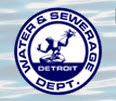 Sewage or wastewater is something we rarely think or talk about. The wastewater from our toilets, showers, washing machines and dishwashers quickly departs our homes through drains that lead to a network of sewer pipes where it becomes somebody else’s responsibility. Nobody wants to smell it, see it or worry about it – and usually we don’t have to.
Sewage or wastewater is something we rarely think or talk about. The wastewater from our toilets, showers, washing machines and dishwashers quickly departs our homes through drains that lead to a network of sewer pipes where it becomes somebody else’s responsibility. Nobody wants to smell it, see it or worry about it – and usually we don’t have to.
Sewage collection and treatment is a complex and technically-sophisticated public service. It costs roughly twice as much to provide sewer service as water service because the treatment process is more expensive and there are more solids to dispose of. Understanding our sewer system, how it is impacted by wet weather and how it is operated and maintained provides a greater appreciation of the value of this service to public health and the environment. We all have a responsibility to protect our waterways.
From toilets to the wastewater treatment plant – protecting our waterways
It comes as a surprise to many that most US cities did not start treating their wastewater until the 1940s. As people moved to urban areas, the volume of wastewater increased and the problems of discharging without treatment became evident. Real progress came with the Clean Water Act in 1972 that required a higher level of pollutant removal in the treatment process and created a grant program to help upgrade wastewater treatment plants and sewer systems. The vast majority of plants in operation today discharge a cleaner effluent, or treated wastewater, as a result of treatment process improvements or expansions made with those grant funds.
It comes as a surprise to many that most US cities did not start treating their wastewater until the 1940s. As people moved to urban areas, the volume of wastewater increased and the problems of discharging without treatment became evident. Real progress came with the Clean Water Act in 1972 that required a higher level of pollutant removal in the treatment process and created a grant program to help upgrade wastewater treatment plants and sewer systems. The vast majority of plants in operation today discharge a cleaner effluent, or treated wastewater, as a result of treatment process improvements or expansions made with those grant funds.
In southeast Michigan, approximately three million residents and thousands of businesses send wastewater down their drains each day to a network of sewer pipes that lead to the Detroit Wastewater Treatment Plant (WWTP). During the most active day in 2010, the WWTP treated 1.68 billion gallons of wastewater helping to keep 77 communities operating smoothly. The collection and treatment of wastewater is a coordinated effort between suburban communities, the counties and the City of Detroit. Wastewater is collected in 28,500 miles of sewer pipe leading to three major interceptor pipes that transport flows directly into the WWTP.
Detroit has one of the largest, single-sited WWTPs in the US. When it was constructed in the 1930s, the engineers planning the system selected a site that could easily accommodate expansion and receive flows from a very large land area. Two large interceptors were constructed to transport flows to the site. As the population grew so did the plant and collection system. The third major interceptor was added in the 1970s to service areas northeast of Detroit.
Today, two enormous pumping stations lift wastewater flows from the interceptors into the treatment plant. Wastewater then flows through a 5-step treatment process to meet National Pollutant Discharge Elimination System (NPDES) permit requirements before being discharged to the Rouge and Detroit Rivers. This process removes harmful pollutants and disinfects flows to kill bacteria. Analytical testing is performed on final effluent prior to discharging to confirm it meets a variety of water quality standards including fecal coliform limits.

“The treatment process successively removes more solids in each step using physical, chemical and biological treatment methods to remove pollutants,” states Sam Smalley, Assistant Director of Wastewater Operations for the Detroit Water and Sewerage Department (DWSD). “On average, it takes about 8 hours to complete the treatment process and deliver a treated effluent that meets permit requirements.”
How the weather impacts sewer service
While flushing toilets and heavy rain storms are unrelated events, they both impact our sewer system. Combined sewers that transport both storm water and sewage in a single pipe make up 30% of the sewer system land area (or 26 of the 77 communities) that sends flows to the Detroit WWTP. These older sewers were constructed when development was much lower. During rain storms, combined sewers collect the storm water that runs off our streets and houses in addition to sewage flows, receiving up to three times the volume of flow that is normally transported on a dry day. This places an enormous burden on the collection and treatment system, forcing equipment to operate at higher capacities. If flows exceed the capacity of the system, combined sewer overflows, or CSOs, occur where excess flows are discharged through emergency outfalls without treatment to a lake or river to prevent basement flooding.
While flushing toilets and heavy rain storms are unrelated events, they both impact our sewer system. Combined sewers that transport both storm water and sewage in a single pipe make up 30% of the sewer system land area (or 26 of the 77 communities) that sends flows to the Detroit WWTP. These older sewers were constructed when development was much lower. During rain storms, combined sewers collect the storm water that runs off our streets and houses in addition to sewage flows, receiving up to three times the volume of flow that is normally transported on a dry day. This places an enormous burden on the collection and treatment system, forcing equipment to operate at higher capacities. If flows exceed the capacity of the system, combined sewer overflows, or CSOs, occur where excess flows are discharged through emergency outfalls without treatment to a lake or river to prevent basement flooding.
Many of the conventional sanitary sewers in the remaining 70% of the service area also receive additional flows during storms from footing drains that are connected to the sanitary sewer. Up until the 1970s, the footing drains on homes were connected to the sanitary sewer rather than to a sump in the basement. Like combined sewers, these “wet” sanitary sewers can become overloaded during storms requiring excess flows to be discharged at pump stations into lakes or rivers creating unwanted sanitary sewer overflows, or SSOs, to prevent basement flooding.
Thus, as sewer flow volume increases during storms, the need to manage and balance flows within the system becomes critical to avoid overloading the WWTP or to prevent sewer backups in people’s homes or sewer overflows into the rivers. Additional facilities have been constructed to address this. The collection and treatment process becomes more complex as storage basins and satellite treatment facilities begin operations to handle these additional storm water flows in the collection system and the WWTP ramps up to maximum capacity.
The sewer collection system tributary to the Detroit WWTP contains a variety of devices to control and manage variable flows. Pump stations lift flows to a higher elevation so they can continue to flow by gravity. Gates and inflatable dams are used in combined sewers to slow down and temporarily store wastewater in sewer pipes when the system is nearing capacity during heavy rains. Retention treatment basins, or RTBs, temporarily store, and when necessary, treat combined sewage from combined sewers. Screening and disinfection facilities treat combined sewage without storing it and discharge the effluent directly to a river. Outfalls located along the Rouge and Detroit Rivers are used as a last resort to discharge CSO and prevent sewer backups. Regulators, small structures in the sewer, modify the direction of flows toward outfalls when the sewer pipe is in danger of being overloaded. Equalization basins are used to temporarily store wastewater flows in separate systems.
 |
|
During storms, the WWTP can literally have to work twice as hard. Capable of treating 930 million gallons per day during dry weather, the Detroit WWTP kicks into high gear and can treat up to 1.8 billion gallons per day during wet weather.
“When a storm is approaching, we will begin pumping more flow into the WWTP, drawing down the collection system to maximize storage capacity,” explains Smalley. “When the storm water gets in the pipes, we can see flows triple from .5 billion gallons to 1.7 billion gallons per day. We have to modify our operations quickly to handle the increased flow. It can take 3 to 4 days to dewater the sewers down to dry weather levels so the plant has to keep operating at full speed even when it quits raining. Wet weather can be extremely challenging to manage.”
Flowing through multiple facilities to reach its final destination
Wastewater service to most suburban communities is provided through a series of pipes owned by the homeowner, suburban community, the County and DWSD. Suburban communities purchase a portion of the capacity in an interceptor sewer owned by the County. Some older suburban communities that border the City of Detroit discharge their flows directly into Detroit sewers. Macomb, Oakland and Wayne Counties operate and maintain the large interceptor sewers that connect into Detroit’s largest interceptors leading to the WWTP as well as pump stations, storage basins and RTBs. The Counties have contracts with DWSD to send the suburban flows to the WWTP.
Wastewater service to most suburban communities is provided through a series of pipes owned by the homeowner, suburban community, the County and DWSD. Suburban communities purchase a portion of the capacity in an interceptor sewer owned by the County. Some older suburban communities that border the City of Detroit discharge their flows directly into Detroit sewers. Macomb, Oakland and Wayne Counties operate and maintain the large interceptor sewers that connect into Detroit’s largest interceptors leading to the WWTP as well as pump stations, storage basins and RTBs. The Counties have contracts with DWSD to send the suburban flows to the WWTP.
Collection and treatment of wastewater is a continuous operation without holidays. DWSD staff operates the WWTP 24 hours a day, every day of the year. Three shifts of workers rotate through the plant each day to keep up with demand. Operators and chemists monitor the treatment process and make adjustments as needed to keep the process active. When rain or snow arrives, dedicated staff is needed to operate RTBs, screening and disinfection facilities (SDFs) and pumping stations. The DWSD Systems Control Group continuously monitors flows coming into the system and relays data to the plant so they know what to expect. Maintenance and repair support is also provided through the DWSD Asset Maintenance Group. A pretreatment program is also administered for industrial and manufacturing facilities to manage more concentrated flows from manufacturing byproducts.

Suburban communities and the Counties have significant amounts of infrastructure to operate and maintain as part of the region’s sewer system. For example, the Oakland County Water Resources Commissioner’s Office operates and maintains 263 miles of large diameter sewer in five interceptor systems, four RTBs, two equalization basins, regulators, diversion structures, 137 municipal pump stations, 2,217 grinder pump stations and 151 permanent flow meters. They also maintain local sewer systems for 11 communities within the County.
According to Doug Buchholz, Director of Operations with the Oakland County Water Resources Commissioner, “36 communities send their wastewater flows into the Oakland County interceptors that transport 42 billion gallons of flow per year through five connections to the Detroit interceptors that lead to the WWTP. Most communities have a capacity limit for the volume of flow that can be sent to the interceptor. Communities in one system have a flow management agreement and are charged more if they exceed that capacity. It can be challenging for some communities to stay within their limits during wet weather.”
Independence Township, a community of 32,000 residents located in Oakland County, maintains 120 miles of sewer and 11 pumping stations to service 6,600 sewer customers in their sewer district. “We have three full-time workers who maintain our sewer system as well as Clarkston’s system,” stated Linda Richardson, Public Works Director. “Our budget is stretched pretty tight and we don’t have the latest technology for all of our maintenance needs but we are diligent about maintenance and addressing problems when they arise. Our asset maintenance system is stored in an Access database but we keep track of the condition of every mile of pipe and undertake needed sewer and manhole rehabilitation.”
“We have been lucky in that we haven’t had problems with our contract capacity,” adds Richardson. “But, we do have a lot of inflow with residents connecting their sumps to the sewer. We always inspect sumps when we are updating water meters.”
The final section of the sewer collection system includes sewer pipes leading to homes on private property and footing drains around the home. Homeowners are responsible for maintaining this part of the system that has been estimated to represent half of the pipe length of the entire collection system throughout southeast Michigan.
Aging infrastructure and regulations impact budgets
Sewers are among our oldest infrastructure components. As they age, sewers can take in additional unwanted groundwater that seeps in through pipe cracks, leaking joints and manholes.
Sewers are among our oldest infrastructure components. As they age, sewers can take in additional unwanted groundwater that seeps in through pipe cracks, leaking joints and manholes.
“Pipe maintenance is one of our top priorities,” according to Buchholz. “It’s challenging in these economic times to get the work done but it is important to stay on top of repairs. If deterioration is allowed to progress, the problem becomes more expensive to fix. We budget annual sewer lining projects and manhole repairs, and are always inspecting pipe and performing spot repairs. Currently, we are working on a $162 million rehabilitation project for a sewer interceptor system that is less than 50 years old. Repairs will include lining, spot repairs and joint/crack grouting. Most repairs are for severe deterioration where maintenance was postponed and are now costly, structural rehabilitation repairs.”
Independence Township has a regular program of televising their sewers to identify leaks, cracks and other problems. “We started our relining program about five years ago, beginning with the oldest sewer sections first,” noted Richardson. “We will probably spend $500,000 on lining this year, and will spend the next three years addressing root infiltration, small cracks and leaks in the remaining sewers. We are also undertaking needed improvements to one of our older pumping stations this year.”
Regulation requiring the control of CSO has spurred a range of collection system improvements over the past 15 years. Since 1990, communities in southeast Michigan have invested $2.4 billion in CSO control projects. New RTBs and SDFs have been constructed, upgrades undertaken to existing RTBs, and sewer improvements and separations undertaken throughout the Detroit WWTP service area. Today, there are 15 RTBs and 3 SDFs that operate during wet weather. During 2010, these facilities prevented 6.4 billion gallons of CSO from reaching our waterways. The heavy snow and wet spring of 2011 have required more frequent operation. In 2011, DWSD will start up the new Oakwood RTB capable of storing and treating 9 million gallons of combined sewage. The City of Dearborn will put 5 treatment capture shafts into operation that function like RTBs, further reducing the volume of untreated overflows that reach our waterways.
Like sewers and WWTPs, many initial CSO projects received federal grants and low interest state funding to offset costs charged to rate payers. However, grant programs have been replaced with low interest loans requiring local communities to pay for 100% of their infrastructure investments through rates. This changing model has forced communities to reevaluate the affordability of water quality improvement projects with overall benefits gained. The planned Detroit Upper Rouge Tunnel that was part of Detroit’s long term plan to control CSOs is one such example. As unemployment spiked, population declined and the number of vacant parcels in the project’s tributary area increased, the ability of Detroit residents to pay their share of the $880 million construction project diminished. Taking advantage of the expanded open space from vacant parcels, green infrastructure projects are being incorporated to address 10% to 20% of the storm water runoff and ten new first flush facilities that are a cross between RTBs and SDFs will be constructed. The implementation period was expanded to 25 years to spread the rate increases over a longer period of time. The Michigan Department of Environmental Quality (MDEQ) worked with the City to approve an innovative solution that works under the current economic scenario.
The value of sewer service
Continued protection of our waterways is an undisputable value held by cities, counties, the MDEQ and citizens. Our state is abundant with lakes and rivers supporting commerce and providing recreational opportunities. Water is a shared resource that must be protected for generations to come.
Continued protection of our waterways is an undisputable value held by cities, counties, the MDEQ and citizens. Our state is abundant with lakes and rivers supporting commerce and providing recreational opportunities. Water is a shared resource that must be protected for generations to come.
Sewage is transported away from our homes and businesses as a not-for-profit service that covers the cost of collection and treatment. The price of sewer service is roughly twice as much as drinking water. That number could continue to increase as additional infrastructure to address CSOs, SSOs and more stringent wastewater treatment regulations are constructed, maintained and operated using rates as the primary funding mechanism. Pollution from wastewater and storm water must continue to be minimized by investing in our infrastructure while balancing environmental benefits and affordability of infrastructure costs.
Source: Detroit Water & Sewerage Department



